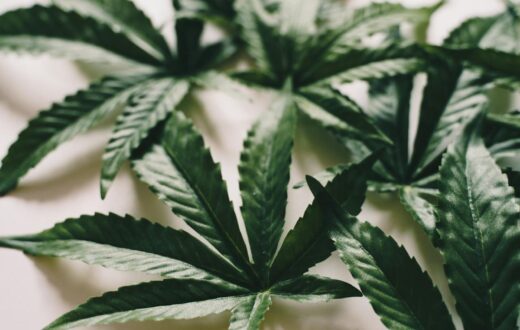Introduction to Afghan Kush x Super Skunk
The Afghan Kush x Super Skunk is a hybrid cannabis strain that has gained considerable popularity among growers due to its unique characteristics and robust nature. As a cross between two well-respected strains, Afghan Kush and Super Skunk, this variety offers a harmonious blend of traits that are highly sought after. Afghan Kush is renowned for its resilience and heavy resin production, while Super Skunk is celebrated for its potency and distinct aroma. Together, they create a strain that appeals to both novice and experienced cannabis cultivators.
This particular strain is characterized by its dense, resin-coated buds and striking dark green foliage, which can present reddish hues as it matures. The blend of Afghan genetics contributes to a strong Indica effect, often providing a deeply relaxing experience, while the Super Skunk lineage ensures a balanced high with uplifting qualities. This dynamic combination makes Afghan Kush x Super Skunk a versatile choice for various users, addressing different medical and recreational needs.
One of the prime advantages of cultivating this strain is its impressive yield potential. Growers often report abundant harvests, especially when provided with optimal growth conditions. Additionally, the strain is known for its robust nature, making it adaptable to various growing environments, whether indoors or outdoors. This adaptability not only makes Afghan Kush x Super Skunk an excellent choice for growers in different climates but also simplifies the cultivation process. Given these characteristics and benefits, it is no surprise that many are eager to learn how to grow Afghan Kush x Super Skunk, as this strain embodies the desires of cannabis enthusiasts seeking quality and quantity in their yields.
Understanding the Genetics
The Afghan Kush x Super Skunk strain is a hybrid that boasts a rich lineage, combining the best traits from its parent strains: Afghan Kush and Super Skunk. Understanding the genetics of these two strains is crucial in grasping what makes this hybrid unique, particularly in terms of flavor, potency, and growth patterns.
Afghan Kush is a pure indica strain that originates from the Hindu Kush mountain range, renowned for its robust, resinous buds and earthy flavor profile. This strain is celebrated for its relaxing effects, making it a preferred choice for those seeking relief from stress and pain. The genetics of Afghan Kush contribute to the dense structure of the plant, with thick branches and broad leaves that result in a bushy appearance. Its influence can be seen in the Afghan Kush x Super Skunk hybrid, resulting in a plant that often exhibits similar growth characteristics.
On the other hand, Super Skunk is a more balanced hybrid, derived from the famous Skunk #1 lineage, which has been crossed with an Afghan strain to enhance its potency. Known for its powerful aroma and uplifting effects, Super Skunk imparts notable qualities to the hybrid, including enhanced potency and a more robust flavor profile. When combined with Afghan Kush, the resulting strain inherits a delightful mix of sweet and hearty flavors, with undertones of citrus and earthy tones that appeal to many connoisseurs.
The genetic composition of Afghan Kush x Super Skunk leads to a plant that offers growers the best of both worlds: a stress-resistant, easy-to-manage indica-dominant hybrid that rewards them with high yields of potent buds. Understanding these genetics allows growers to tailor their cultivation practices, ultimately enhancing the experience of learning how to grow Afghan Kush x Super Skunk successfully. This awareness of inherited traits is essential for ensuring optimal growth and maximizing both flavor and potency in the final product.
Essential Growing Conditions
To successfully grow Afghan Kush x Super Skunk, it is crucial to establish the ideal growing conditions that ensure the strain thrives. This hybrid, combining the robust genetics of Afghan Kush with the classic qualities of Super Skunk, can yield impressive results when provided with a conducive environment. First and foremost, temperature plays a pivotal role in the growth and development of this strain. Afghan Kush x Super Skunk prefers daytime temperatures between 70°F and 85°F (21°C to 29°C) during the vegetative stage, while nighttime temperatures should stay within a range of 60°F to 70°F (15°C to 21°C) to prevent stress and promote healthy growth.
Humidity levels are another essential factor to consider. During the vegetative stage, maintaining the humidity between 40% and 70% helps support the plant’s rapid growth. However, as the plants transition into the flowering phase, it’s advisable to lower the humidity to around 40% to 50%. This precaution reduces the risk of mold and mildew, supporting the full development of resinous buds characteristic of the Afghan Kush x Super Skunk strain.
Light requirements for growing Afghan Kush x Super Skunk are significant as well. These plants thrive under a lighting schedule of 18 hours of light and 6 hours of darkness during the vegetative phase. Once they enter the flowering stage, a 12/12 light cycle is optimal. Using high-quality LED or HID lights can enhance growth and resin production, crucial for an effective yield. Finally, the soil composition must be well-draining, rich in organic matter, and slightly acidic to neutral (pH 6.0 to 7.0). By ensuring these essential growing conditions, cultivators can maximize their success with Afghan Kush x Super Skunk and experience the full potential of this remarkable strain.
Nutrient Requirements
Understanding the nutrient requirements for Afghan Kush x Super Skunk is crucial for cultivating healthy plants capable of thriving throughout their growth cycle. These plants, renowned for their generous yields and exceptional flavor, have distinct nutritional needs that must be addressed during each growth stage: seedling, vegetative, and flowering.
During the seedling phase, it is essential to provide a light nutrient solution that contains essential micronutrients such as nitrogen, phosphorus, and potassium in relatively low concentrations. This ensures that young plants develop strong roots without the risk of over-fertilization. As they transition into the vegetative stage, the nutrient demand increases. At this point, Afghan Kush x Super Skunk will require higher levels of nitrogen to support foliage development, and the fertilizer should be adjusted to accommodate this requirement, ideally resulting in balanced N-P-K (nitrogen, phosphorus, potassium) ratios.
As the plants enter the flowering stage, the fertilization strategy should change to boost phosphorus and potassium levels while reducing nitrogen. This balance promotes robust bud formation and enhances the overall potency and flavor profile of the Afghan Kush x Super Skunk. It is recommended to use bloom fertilizers specifically formulated for cannabis plants, which typically contain higher phosphorus and potassium concentrations.
Identifying nutrient deficiencies can significantly impact growth. Common signs include yellowing leaves, stunted growth, and poor bud development. Growers should regularly monitor their plants and soil conditions to catch deficiencies early and adjust their fertilization strategies accordingly. Additionally, utilizing organic fertilizers can improve soil health and microbial activity, leading to better nutrient absorption in Afghan Kush x Super Skunk. Through these approaches, growers can maximize the yield and flavor of their plants, ensuring a successful cultivation experience.
Growing Methods: Indoor vs. Outdoor
When considering how to grow Afghan Kush x Super Skunk, it is essential to evaluate the different growing methods available—specifically indoor and outdoor cultivation. Each approach has its own set of advantages and disadvantages, influenced by factors such as space, environmental control, and potential yield.
Indoor growing provides a controlled environment, allowing cultivators to regulate temperature, humidity, and light exposure. This controlled setting results in the ability to optimize growth conditions for Afghan Kush x Super Skunk, contributing to a more consistent yield. Furthermore, indoor cultivation often offers greater privacy and security, reducing the risk of theft or spillage of information regarding the grow operation. However, indoor growing typically requires a significant initial investment in equipment, such as grow lights, ventilation systems, and environmental controls, which might be a deterrent for some growers.
On the other hand, outdoor cultivation takes advantage of natural sunlight, which can lead to larger plants and consequently higher yields than indoor methods. Growing Afghan Kush x Super Skunk outdoors allows for the use of organic soil and natural growing techniques that can enhance the flavor and potency of the final product. Outdoor growers also benefit from less operational cost compared to indoor setups. However, outdoor cultivation poses challenges such as vulnerability to pests, diseases, and unpredictable weather conditions, which can adversely affect the quality and yield of the harvest.
Ultimately, the choice between indoor and outdoor cultivation methods will depend on the grower’s resources, desired control over growing conditions, and personal preferences. By carefully weighing the pros and cons of each method, one can determine the best way on how to grow Afghan Kush x Super Skunk to achieve optimal results.
Common Pests and Diseases
When growing Afghan Kush x Super Skunk, it’s essential to be aware of various pests and diseases that might threaten the health and yield of your plants. Recognizing these common issues early is key to effective management, ensuring that your crop can thrive throughout its growth cycle.
One of the most prevalent pests is the spider mite. These minuscule arachnids can drain the vitality from your plants, leading to yellowing leaves and stunted growth. To prevent an infestation, it is advisable to maintain optimal humidity levels and regularly inspect your plants for signs of infestation. Should spider mites appear, insecticidal soaps or neem oil can be effective treatments.
Another pest to watch out for is the whitefly, which can cause similar damage by sucking plant sap. Encouraging beneficial insects, such as ladybugs, can help control whitefly populations naturally. Additionally, sticky traps can be useful in monitoring their presence and preventing larger infestations.
In terms of diseases, powdery mildew is a common concern for growers of Afghan Kush x Super Skunk. This fungal infection appears as white powdery spots on leaves and can significantly reduce photosynthesis, ultimately affecting yield. Preventative measures include ensuring adequate airflow around plants and avoiding overhead watering. If powdery mildew appears, fungicides specifically designed for this issue can be employed to eradicate it.
Root rot is another disease that can impact these plants, often resulting from overwatering and poor drainage. To protect against this, it is crucial to use well-draining soil and maintain a balanced watering schedule. In cases of root rot, removing affected roots and implementing a more suitable watering routine can help save your crop.
By staying vigilant about pests and diseases, and knowing how to grow Afghan Kush x Super Skunk while implementing effective preventative measures and treatments, growers can ensure a healthy and bountiful harvest.
Harvesting and Curing Techniques
Proper harvesting techniques are crucial when growing Afghan Kush x Super Skunk, as they significantly influence the final product’s flavor, potency, and overall quality. The ideal time to harvest these plants generally occurs when the trichomes, which are tiny resin glands on the buds, turn from clear to a milky white hue. This transformation indicates that the cannabinoids, particularly THC, are at their peak. Some growers prefer to wait until a portion of the trichomes become amber, signifying a more mellow effect, which can be a personal preference in achieving the desired psychoactive experience.
Once the appropriate harvest time is identified, the next step involves careful cutting. Use sterilized scissors or pruning shears to avoid introducing pathogens. Cut the branches individually, ensuring minimal damage to the plant to facilitate a smoother recovery for any remaining buds. It is advisable to harvest in the early morning when the plants are most hydrated, as this helps preserve essential oils and terpenes, ultimately contributing to the rich flavors of the Afghan Kush x Super Skunk strain.
After harvesting, the focus shifts to curing, a process that enhances both flavor and potency. Begin by hanging the branches upside down in a cool, dark, and well-ventilated space. This drying phase usually lasts about 7 to 14 days, during which humidity levels should be monitored to maintain optimal conditions. Once the buds feel dry on the outside but still slightly moist on the inside, they are ready for the curing process.
Place the buds in airtight containers, filling them to about 70% capacity, and keep these containers in a cool, dark area. Open the jars daily for the first week to allow moisture to escape and fresh air to circulate, a practice essential for preventing mold growth. Following this initial week, the jars can be opened less frequently. Proper curing can take anywhere from several weeks to a couple of months, significantly enhancing the overall smoking experience of Afghan Kush x Super Skunk.
Yield Expectations
The potential yield of Afghan Kush x Super Skunk varies significantly based on several factors including cultivation methods, environmental conditions, and grower experience. Typically, indoor growers can expect yields ranging from 400 to 600 grams per square meter when employing optimal growing practices. In contrast, outdoor cultivation may yield between 500 to 800 grams per plant, given suitable weather and soil conditions.
One of the primary influences on yield is the growing environment. For indoor cultivation, controlled factors such as light cycles, temperature, and humidity directly impact plant growth and flowering. Utilizing high-intensity discharge (HID) lights, for instance, can enhance bud development and overall plant health, leading to a more substantial harvest. Furthermore, employing techniques such as topping, low-stress training (LST), or ScrOG can maximize light exposure and encourage bushier plant growth, which often translates into higher yields.
In outdoor settings, yield potential is heavily reliant on geographic location and seasonal weather patterns. Ideal growing climates for Afghan Kush x Super Skunk include regions where temperatures are moderate and there is ample sunlight. Additionally, proper soil management plays a crucial role; nutrient-rich soil with good drainage will support robust plant growth. Factors such as pest management and plant diseases also need consideration, as they can adversely affect yield quantities if not addressed promptly.
Ultimately, grower expertise leads to better results. Knowledge of the Afghan Kush x Super Skunk strain’s requirements enables cultivators to tailor their approach for maximum yield. By diligently monitoring the growing environment and adhering to best practices, growers can look forward to satisfying harvests that reflect the strain’s potential. With the right conditions and methods in place, Afghan Kush x Super Skunk can certainly meet or exceed yield expectations.
Conclusion and Best Practices
Growing Afghan Kush x Super Skunk requires careful attention to various factors to achieve optimal results. Throughout this article, we have explored important aspects of cultivation, including climate considerations, soil quality, nutrition, and pest management. Each of these elements plays a vital role in shaping the health and vitality of the plants, which ultimately impacts the quality and yield of the harvest. By understanding the specific needs of Afghan Kush x Super Skunk, growers can ensure a productive and rewarding cultivation experience.
To further enhance your success, we recommend incorporating a few best practices into your growing regimen. First, it is crucial to select the right environment for your Afghan Kush x Super Skunk plants. This strain thrives in a mild climate with consistent temperatures and moderate humidity. If you are growing indoors, ensure proper ventilation and lighting to simulate optimal growing conditions. For outdoor cultivation, consider planting during late spring when the risk of frost has passed.
Secondly, focus on soil quality and nutrient management. Using a well-draining mix enriched with organic matter will provide the foundation for healthy root systems. Regularly monitor pH levels and nutrient concentrations to maintain a balanced diet for your plants. Supplementing with nutrients high in phosphorus and potassium during the flowering stage can significantly enhance final yields and resin production.
Pest control is another critical aspect of successfully growing Afghan Kush x Super Skunk. Stay vigilant for common pests and diseases, employing integrated pest management strategies to minimize risks. Additionally, training techniques such as low-stress training (LST) or topping will help maximize light exposure and overall plant structure, leading to improved yields.
In summary, by combining the right environmental conditions, quality soil, and effective growth techniques, you can successfully cultivate Afghan Kush x Super Skunk, ensuring a rewarding harvesting experience. The careful application of these best practices will allow for the maximization of yield and the enhancement of quality in your final product.













